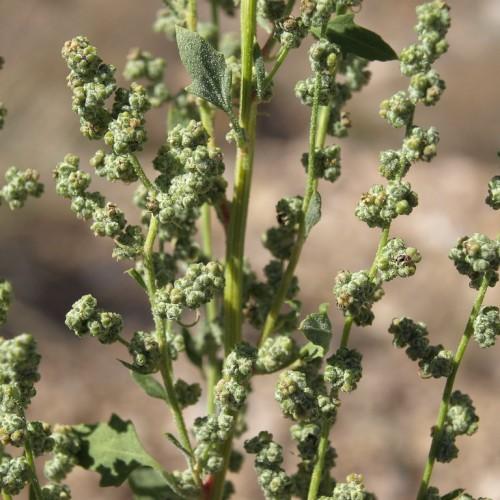
Zsack's Goosefoot
Chenopodium berlandieri var. zschackei
Watering:
Frequent
Hardiness Zone:
Sun:
full sun,part shade
Leaf:
Yes
Growth Rate:
Low
Drought Tolerant:
Yes
Salt Tolerant:
Yes
Thorny:
Yes
Care Level:
Medium
watering
Bush's Goosefoot should be watered moderately, about every 10 days to 2 weeks, or whenever the top inch of soil feels dry to the touch. Water thoroughly to ensure that the soil is totally saturated, but take care to not overwater. Be sure to empty any saucers or trays underneath the pot after watering to avoid root rot.
sunlight
Bush's Goosefoot (Chenopodium berlandieri var. bushianum) is a hardy annual plant which is capable of surviving in many types of soil. This species of plant is adapted to a wide range of conditions and is highly tolerant of sunlight. This plant should receive full sun for at least 6 to 8 hours a day in order to promote optimal growth. However, it can survive in partial sun as well, but will be less productive and more prone to pest and disease problems when not given the proper direct sunlight. For optimal growth and health, try and position the plant in a sunny area near a window or patio in order to get the full benefit of the sun's rays.
pruning
Bush's Goosefoot should be pruned in late spring or early summer. Pruning should be light and mainly involve shaping and removing dead or diseased material. The plant also forms multiple stems. To keep it in a more attractive form and to encourage better yields, it can be pruned back by 1/3 or 2/3 of its height. Pruning only 1 of the longest stems to maintain an open growth habit is also an acceptable technique. The need for pruning will depend on how quickly the plant is growing and how fast it is producing seed. Once the plant has a well-established growth habit, pruning can be kept to a minimum.
